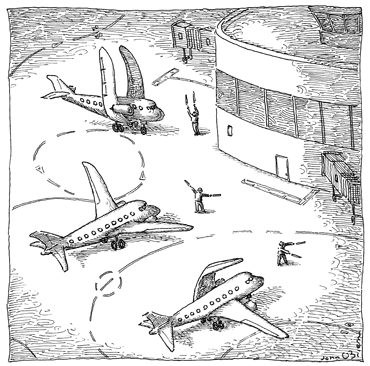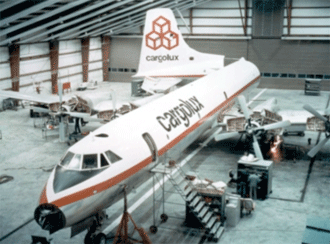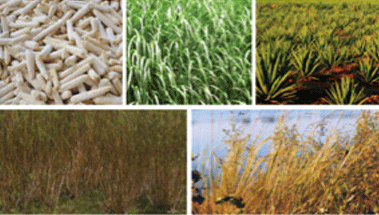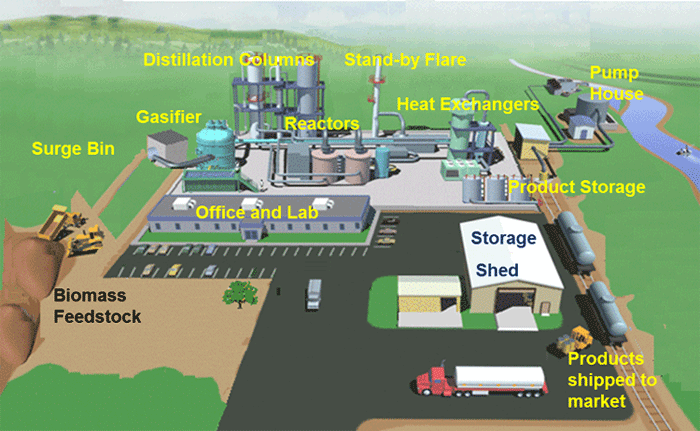 |
 |
 #INTHEAIREVERYWHERE |
| Vol. 16 No. 22 | Friday
March 3, 2017 |
|
Biofuel Drives Aviation Future
Christer Saw The Need
Put His Money On The Table “At that time, Christer had sold his shares in Cargolux and among other interests taken a small involvement in a biofuel project in Eritrea, Africa, and also started a pilot project in North West Mexico.”
Road To Discovery
“I decided to have a first-hand
look at the project and traveled
to Houston to meet the project leader
of the Integrated Seawater Agricultural
System (ISAS), or Seawater Foundation
(SWF). I got a good introduction
from Carl Hodges, the founder and
a highly interesting and creative
gentleman.
Other Biofuel Sources
“Halophytes are not the only
interesting plants to use as feedstocks
for biofuels; a number of other
feedstocks and biomasses are available.
Feedstock Availability
Waste Candidates For Biofuel
“In theory, all organic waste
fractions can be used in sustainable
jet fuel production; in particular,
vegetable and animal waste oils
are highly suited.
Other Sources
“Other sources of feedstock
are also possible, but not currently
available in any significant amount
in the region.
Technologies Available Right Now
“In 2017 the Nordic countries
have strong competencies in biorefining
technology. Within a biochemical
conversion route, this includes
suppliers for pre-treatment of lignocellulosic
biomass by enzymatic hydrolysis,
as well as yeast cultures for fermentation,
and within a thermochemical route
it includes gasification of biomass
and reforming of syngas.
Nordic Tech
“Finally refining technologies
relevant for all biofuels is also
part of the Nordic technology portfolio.
Best Prospects Ahead
“The most promising pathway
scenarios for Nordic production
of sustainable jet fuel is HEFA/HEFA+,
based on waste-oils and oil crops,
Fischer-Tropsch (FT), based
on wood residuals, and Lignocellulosic
Alcohol-to-Jet (AtJ).
Which Biofuel Source Is Best?
“Comparing the three scenarios,
the HEFA-based scenario is superior
to the two other scenarios when
it comes to maturity and cost efficiency.
Location For Production Wide Open
“The location of the final
processing steps of refining for
all scenarios can, theoretically,
also be located in any of the Nordic
countries, as the transportation
costs of the more energy dense,
intermediate products are low, compared
to the costs of transporting pure
feedstocks.”
Why Biofuel In Nordic Countries? “In comparison to the rest of the world, the study identifies the following advantages for the Nordic region in engaging in sustainable jet fuel production:
The Regulators
“Sustainable jet fuels for
aviation are highly regulated and
must meet strict specifications
in order to be used in both commercial
and military aviation.
Accepted & Under Review
“As of yet, three pathways
have achieved an ASTM certification,
three are under review, several
are in the testing phase, and others
are in earlier stages of development.
Other Options
“Other options include ATJ
Alcohol to Jet Fuel and Hydrogenated
Pyrolysis Oils (HPO).
What Flies Ahead
“The aviation industry is
unlikely to rely on just one type
of feedstock.
Testing, Testing, Testing
“Testing of biofuels is crucial
to determining suitability for aviation.
Prioritize Biomass For SJF?
“Viewing
numerous alternatives for producing
sustainable energy for electric
power for heating, various industries
like trains, buses, metro, EVs (Electric
Vehicles) and many other land-based
trades, the question has been raised
if biomass should be prioritized
for aviation. ATAG has recommended
that the EU evaluate this option,
as it’s feared that insufficient
biomass is available to meet the
energy needs of all types of transportation
as well as power plants and the
like, especially as these land based
activities have other options. Aviation,
on the other hand, only has biofuels
produced from feedstocks and biomass
for sustainable aviation jet fuels.
This subject is up for discussion
in the EU and elsewhere; if it remains
unsolved, it could clearly complicate
and delay a smooth transition from
a fossil-based world toward a much-needed
clean, sustainable, and renewable
society that will safeguard a healthy
environment and planet for generations
to come.”
Up Next: Political support, SJF Investors, and much more in the journey to achieve a global, sustainable aviation industry. Look for that additional coverage in an upcoming article. |
 |
 |
|
 |
 |
 |
 |
 |
 |
If
You Missed Any Of The Previous 3 Issues
Of FlyingTypers Access complete issue by clicking on issue icon or Access specific articles by clicking on article title |
||
 Vol.
16 No. 19 Vol.
16 No. 19"Unstoppable" United Cargo Saddles Up For The Long Ride Chuckles for February 23, 2017 Weekend View Implications Of A Trump Trade War Worlds Of Discovery President's Day |
 Vol.
16 No. 20 Vol.
16 No. 20Groundbreaking President Zhao Chuckles for February 27, 2017 Trump Effect: Part 2 Life Is Uncertain, Eat Dessert First A Cut Above Mahé Mahé As ATC Goes Air Seychelles Fat Tuesday |
|
Publisher-Geoffrey
Arend • Managing Editor-Flossie Arend • Film Editor-Ralph Arend • Special Assignments-Sabiha Arend, Emily Arend • Advertising Sales-Judy Miller |
|



 Back when fuelling an all cargo
aircraft cost “10 cents a
gallon,” during what some
might term the “good old days,”
Robert Arendal had just started
with Cargolux Airlines International
in Luxembourg.
Back when fuelling an all cargo
aircraft cost “10 cents a
gallon,” during what some
might term the “good old days,”
Robert Arendal had just started
with Cargolux Airlines International
in Luxembourg. “Christer Salén, one
of the founding fathers of Cargolux
and long-time member of the CV Board
of Directors, said to me after I
had retired from Cargolux:
“Christer Salén, one
of the founding fathers of Cargolux
and long-time member of the CV Board
of Directors, said to me after I
had retired from Cargolux:  “In
Mexico I learned that an advantage
of this initiative is that halophytes
can be irrigated by seawater, and
also can be established in areas
that are otherwise unsuitable for
growing food products.
“In
Mexico I learned that an advantage
of this initiative is that halophytes
can be irrigated by seawater, and
also can be established in areas
that are otherwise unsuitable for
growing food products. “The Nordic Report on sustainable
jet fuel lists the following sources:
“The Nordic Report on sustainable
jet fuel lists the following sources:


